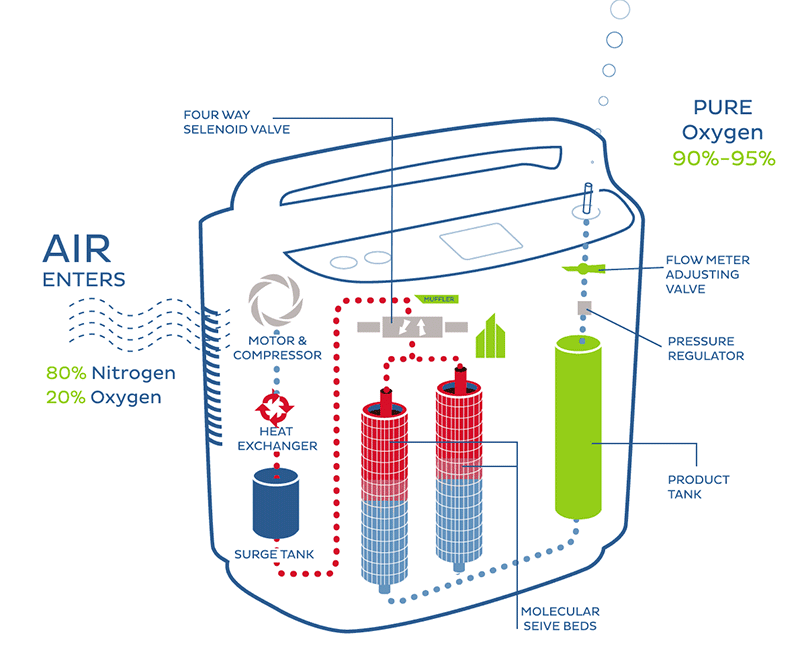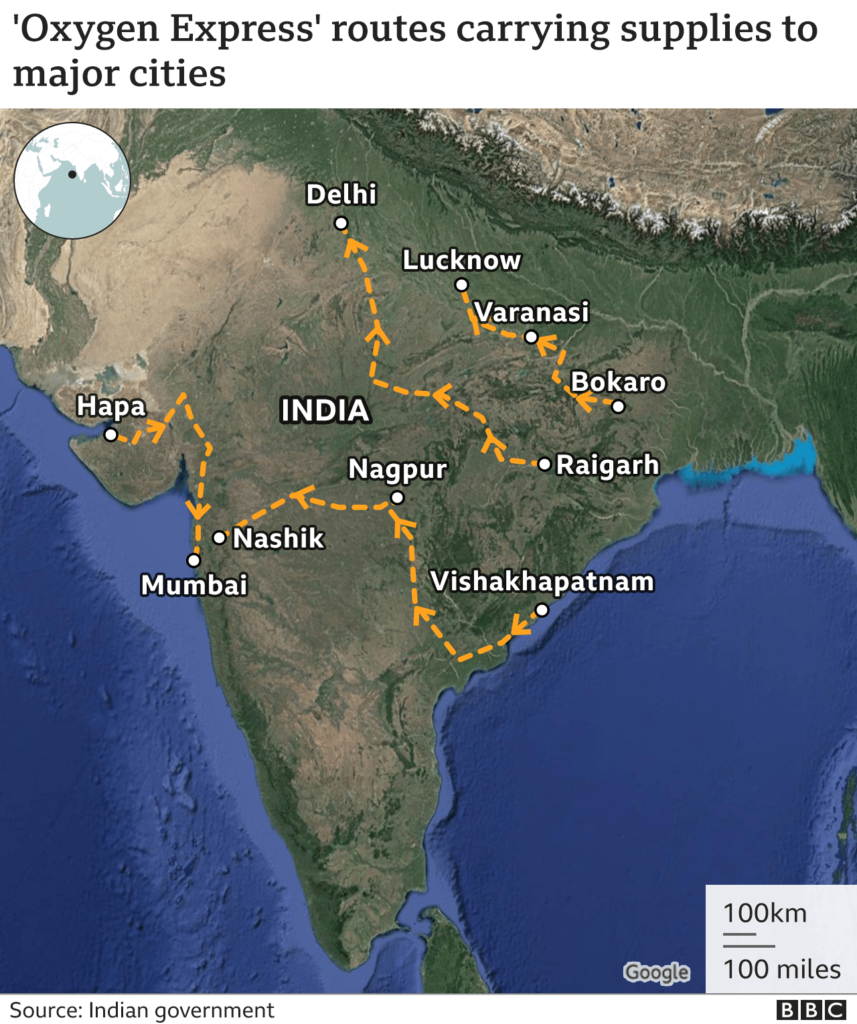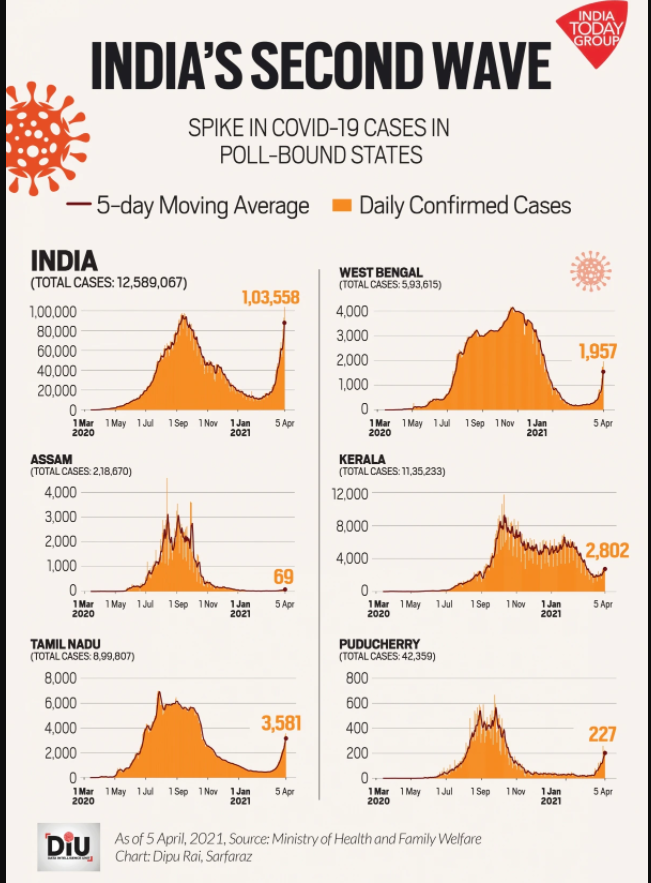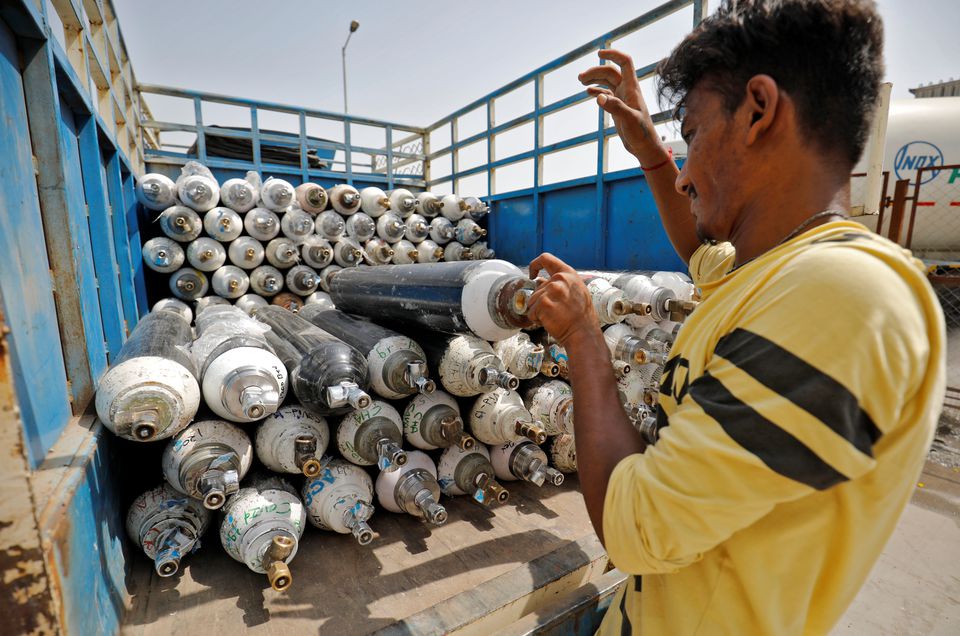Oxygen seems to be the most valuable and life-inducing resource on Earth in these current times of crisis. It always was but the way Covid has sparked its yearning, has been heart-wrenching for every possible Human.
Who must have imagined lives siphoning out of Humans due to sheer unavailability of enough medical Oxygen around? Its disturbing that when family members need to be soothing the patient under their care and presence, they are running amok for arranging Oxygen or other life-essential aids.
Understanding the Oxygen Math: Why the demand outweighs supply?
As per the statement of an official of the Central government on April 21 given to the Delhi High Court, daily demand for medical oxygen in the country had risen to 8,000 metric tonnes.

Assuming that Oxygen reserves are entirely used for medical purposes and not the Industrial diversions as per the new rules and even considering that the Oxygen demand does not rise, If India’s corpus of 55000 metric tonnes is used only to fill in gaps between daily demand and supply (daily production of industrial and medical oxygen upto 7,127 metric tonnes), the oxygen will only remain for two weeks based on current scenario (can go upto 8 weeks if conditions weaken a bit).
Therefore, the country will likely face a shortfall in this regard. Such an assumption is good but vague when Coronavirus cases are likely to rise and experts expect Tsunami in cases.
Understanding the math comes easy when we know the answer to following questions:
From where is this medical Oxygen sourced?
Is Medical and Industrial Oxygen different? What is the supplied Oxygen’s innate purity?
How Oxygen can be streamlined into the supply chain more efficiently?
Liquid medical oxygen is a refrigerated liquified gas capable of causing cold burns or frostbite, in case of contact with unprotected skin. It is a non-flammable gas but a strong oxidant, enough to support and intensify any form of combustion.
Usually, Oxygen extraction is done by two primary methods.
One method is Fractional Distillation of liquefied air, with N2 fading as a vapor while O2 is left as a liquid.

Another viable method of sourcing Oxygen is through pressure swing adsorption (PSA) in which a stream of clean, dry air is passed through zeolite molecular sieves, absorbing the nitrogen and extending a gas stream that is 90% to 93% O2.
Storage and transportation of Liquified Oxygen:
It is often transported as a liquid in specially insulated tankers in bulk for economies of scale. Herein, even a litre of liquefied oxygen is equivalent to 840 liters of gaseous oxygen at atmospheric pressure and 20 °C (68 °F).
These kinds of tankers are used to refill the liquid oxygen storage containers, for hospitals and other institutions that need large volumes of pure oxygen gas.
Medical oxygen is bottled in white cylinders while industrial oxygen is usually bottled in coloured cylinders across the World.

Other Industries in competition with Oxygen usage: Iron ore smelting alone uses approximately 55% of commercially produced oxygen worldwide apart from other small industry uses like plastic.
In April 18 decision, the Central government exempted nine industries for Oxygen use apart from Medical: ampoules and vials, pharmaceuticals, steel plants, petroleum refineries, nuclear energy facilities, oxygen cylinder manufacturers, waste-water treatment plants, food and water purification – process industries that require uninterrupted operation of furnaces.
But in the subsequent order, it has restricted Oxygen use for saving lives: “Use of liquid oxygen is not allowed for any non-medical purpose and all manufacturing units may maximise their production of liquid oxygen, and make it available to the government for use for medical purposes only, with immediate effect and until further orders,” the Union Home Secretary said in the order.
“Further, all stocks of liquid oxygen should be made available to the government for use for medical purposes. No exception is allowed to any industry with regard to use of liquid oxygen”.
Pure Oxygen and associated threat:
Our body has evolved well enough to capture and transport the oxygen we breathe through haemoglobin. However, if one breathes in air with a much higher than normal O2 concentration, the oxygen in the lungs overwhelms the blood’s ability to carry it.
This leaves free oxygen on to the surface proteins of the lungs, interfering with the operation of the central nervous system and ultimately attacking the retina.
Also breathing oxygen at pressures of 0.5 bar or more (roughly two and a half times normal) for continuous 16 hours can cause an irreversible lung damage and, eventually, death.
Challenges involved in the Oxygen availability:
India faces an unprecedented and massive logistical problems to supply and transport Oxygen to the ever burgeoning Patient lives at risk.
Firstly, Oxygen production is unevenly distributed across the country with only eight states of Maharashtra, Gujarat, Jharkhand, Odisha, Tamil Nadu, Karnataka, Kerala and West Bengal accounting nearly 80% of India’s total dedicated oxygen production.

Having surplus produced Oxygen in the Country’s East(most steel plants here producing In-house Oxygen) and low cases in Odisha’s belt, Oxygen is not as divinely required as in Delhi or nearby states. But the problem lies at transporting it at huge distances as there are not enough tankers to transport oxygen even if supplies can be fetched after meeting our own demand.
Even once reached the destination, it needs to be stored in either cryogenic vessels or cylinders which are again not easily available. Manufacturers were simply not ready.
According to one: “Cylinders are manufactured foreseeing demand, but in February-March we slowed down production because it seemed Covid was over and there was no requirement. So now we can’t keep up with this huge surge because the production cycle is long and raw materials need time sourcing.”
Secondly, in this ruckus, we have forgotten to rely on our best localized solutions. It barely takes 4-6 weeks to install a Pressure Swing Adsorption oxygen generator at the hospital site, just Rs 1.25 crore average cost.
However, the Central government alone took approx. 8 months to float a tender for 162 PSA oxygen plants, out of which only 33 are operational.
This on-site capacity building may have proved particularly useful in states and UTs like Delhi, Madhya Pradesh and Bihar, which do not have any oxygen production capacity of their own. This can serve to avoid further challenges of logistics and transport involved in carrying Oxygen cylinders.
Public-private partnership in such scenario:
Industrial giants like The Tatas, Larsen & Toubro and Bharat Forge have expressed their interest in building pressure swing adsorption (PSA) oxygen plants at hospital sites, while Indian Oil Corporation and Reliance Industries are going to contribute both oxygen cylinders and cryogenic tankers needed for its transportation from one place to the another. IAF have alongside given their fair share to the country’s Oxygen crisis.
We have import tankers coming from four destinations — Dubai, Bangkok, Shanghai and Dusseldorf. In addition to a firm commitment of 500 tonnes from Gulf and about 3,000 tonnes from other countries against a tender of 50,000 tonnes, floated by GOI on April 16.
Much debated PM CARES Fund has also officially approved the allocation of funds for 551 dedicated PSAs inside public health facilities in the country.
Delhi High Court’s late-night court hearing on Wednesday emerges as a catalyst at the time when things were falling apart. The Justices called on Central Government to “beg, borrow, steal or import” in order to meet the city’s Oxygen needs.
According to Justice Vipin Sanghi: “The state cannot say ‘we can provide only this much and no more’, so if people die, let them die; that cannot be an answer by a responsible sovereign state”. The Court even went on to assert that If anyone obstructs the oxygen supply, “we will hang that man”.

showing how States undergoing Election are serving best to spread the Virus
The Election Commission has been held singularly responsible for the second wave of Covid and allowed to be probably booked for murder in lieu of the crowded campaigns for 5 states’ ongoing polls that continued in the middle of Covid Tsunami, according to Madras High Court. The court has even threatened to stop the counting of votes on Sunday if ECI lacks in action.
All that needs to be done now is the remove the penchant black-marketing of Oxygen and Covid-allied goods. Also a Centralized system to check and provide such requisites by government is a necessary evil as there shall be transparency enough for ‘victims of the fall’ to know where these essentials are lacking at district or local level.
If we cannot ensure justice to people wailing for basic Health need, all our attempts to arrange these essentials may lie in vain. India can still stand proud with its tarnished reputation at stake, but we can also start working out on things and prosper.
We can babble all about equity and Health in normal times but it is the difficult times that makes or breaks a leader.


